It is often said that racing improves the breed, but what works on the racetrack might not be so effective in the dealer’s showroom. Such was the case with the 1986 Pontiac Grand Prix 2+2. The company designed the car’s distinctive aerodynamic profile in a quest for success on NASCAR’s superspeedways, but the vehicle failed to ignite excitement with the buying public. By the time production ended, a mere 1,225 buyers had been willing to hand over the cash for a car that sacrificed practicality for performance gains. Barn Finder Larry D has once again demonstrated his ability to spot the interesting and quirky, so thank you for referring this one to us, Larry. The owner has decided to part with his Pontiac, so he has listed it for sale here on eBay. It is located in Cortland, Nebraska, and while he has set the BIN at $16,500, there is the option available to make an offer.
The owner supplies a single photo that shows this Pontiac’s entire exterior, but this shot gives us a clear view of the styling feature that polarized potential buyers. During the early 1980s, Ford’s Thunderbird was successfully demolishing the GM opposition in NASCAR competition. This was primarily because it features a more aerodynamic profile than that possessed by the models produced by Pontiac and Chevrolet. The margin was not significant on most tracks, but on superspeedways like Daytona and Talladega, the gulf was a yawning chasm. No lesser authority than Richard Petty had been bending the ears of the powerbrokers at Pontiac in a bid to help them to understand the problem, but it took the company until 1986 to produce their better mousetrap. By restyling the rear of the production version of the Grand Prix, it was apparent that these changes could significantly improve airflow over the rear of the car and the back spoiler. The result would be a significant increase in rear downforce and better speed in the corners at critical tracks like Daytona. While it was effective, Pontiac’s solution was less than elegant. Rather than making wholesale changes to the rear sheetmetal of the “notchback” Grand Prix, the company developed a fastback-style rear window that achieved the same outcome. However, it came with some compromises that further alienated some potential buyers. While the rear glass gave the impression that the 2+2 might be a hatchback, the glass was fixed. The changes didn’t reduce overall trunk space, but the revised trunk lid opened barely wide enough to slide the space-saver spare in and out. If owners wished to carry bulky items, these needed to be placed on the back seat or sent to their destination by other means. Pontiac made some further aero tweaks to the front of the 2+2, but these were nowhere near as controversial. The owner of this Grand Prix confirms that he has treated it to a repaint in its original shade of silver, as the car suffered the common issue of peeling clearcoat. As a result, it presents nicely, with no paint or panel issues. The vehicle remains rust-free, while the graphics and stripes look crisp and clean. The exterior plastic shows no evidence of UV deterioration, while the Rally II wheels and glass appear flawless.
If the 2+2’s styling didn’t win it many friends, its performance credentials failed to help its cause. Pontiac offered the car in a single mechanical configuration, and it wasn’t the most potent on the block. For the original owner’s $17,800 initial outlay, their Grand Prix’s engine bay was occupied by a 305ci V8 that produced 165hp. The rest of the drivetrain consisted of a 200-4R four-speed automatic transmission, a 3.08 Posi rear end, power steering, and power brakes. Even with the improved aerodynamics, the 3,600lb 2+2 was not going to set the world alight when pointed at a ¼ mile. That journey took 17 seconds, reinforcing that this was by no means a muscle car. This was in the same year when Buick’s Grand National could complete that journey in 15.2 seconds. That demonstrates that there can be a world of difference between a genuine performance car and one that is produced as a homologation special. Ignoring this for a second and examining our feature car more closely, we find that its drivetrain offers potential buyers plenty of good news. The owner claims that it has a genuine 61,826 miles on its odometer, and judging by the documentation that he includes, he may be able to confirm this. I have spotted the Dealer Invoice and the Build Sheet, and there are other items that I can’t identify. The car runs and drives perfectly and should be considered a turn-key classic.
The further we dig into this Pontiac, the more it seems that potential buyers won’t need to spend anything beyond the purchase price. The original cloth upholstery on the seats is in good order, with only some minor wear visible on the bases and outer bolsters of the front buckets. The remaining upholstered surfaces are in excellent order, as are the dash and pad. The carpet exhibits a few small marks, but this is no surprise when you consider the pale shade that Pontiac chose for these classics. Apart from appearing in excellent condition, the interior comes with an impressive array of comfort features. These include air conditioning, power windows, power locks, cruise control, a leather-wrapped tilt wheel, a remote driver’s mirror, a comprehensive gauge cluster, and an AM/FM radio and cassette player.
I’ve probably been pretty harsh in my treatment of this 1986 Grand Prix 2+2, and for some, that may seem unfair. However, this probably has less to do with its controversial styling and more with what I see as a lost opportunity for Pontiac. The company had more potent motors in its armory, and you would have to wonder how much better the 2+2 could’ve been had the 210hp version of the 305 as featured in the ’86 Trans Am found its way under the hood. Even for these perceived shortcomings, the car remains a rarity, with the Pontiac Historic Services confirming that 1,225 examples rolled out of showrooms and into the lives of eager buyers. They have remained largely forgotten and unloved, but values are beginning to increase slowly. This one is priced right at the top of the market, but its odometer reading and overall condition could justify this figure. If values continue to climb, buying a spotless example now might not be a bad move. Would you be willing to roll the dice on this one?







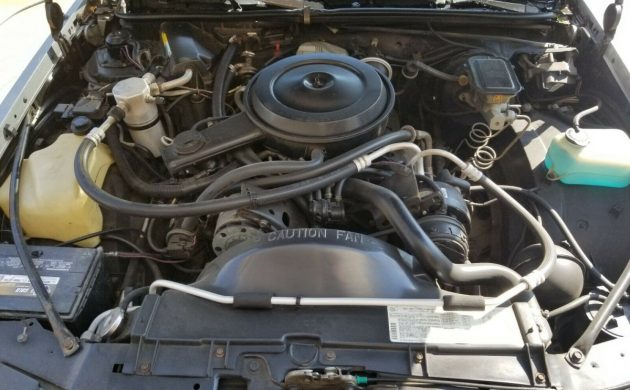
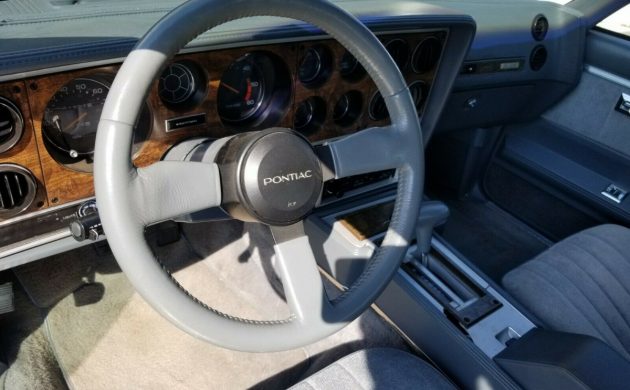
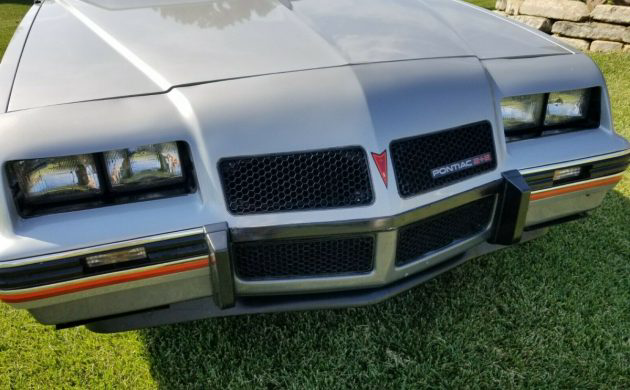
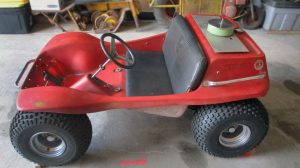

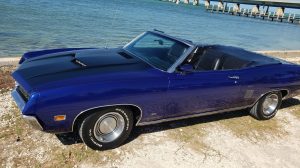
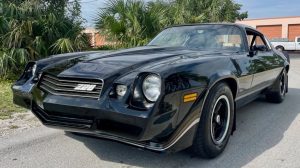


In spite of the ugly hatchback and the wheezing engine, it is still one nice looking car. Maybe Pontiac’s performance focus was toward the Trans Am, but this GP could’ve gotten more.
I honestly like the bubbleback’s looks. If it were properly production-engineered as a hatchback it would be way better than a notchback GP, but the trunk opening is a joke.
In the mid ’90s I worked as a grocery bagger and one customer was the proverbial little old lady who drove one of these. One day I gave her a carry-out and had to shimmy the grocery bags to get them into the trunk through that ridiculous mail slot. If she had to brake hard on the way home and an apple or orange rolled to the front of the trunk it might’ve required disassembling the car to get it out.
She probably got a screaming deal, something tells me the 1,225 units sold were a minimum set by NASCAR for homologation, and not one car more was made or sold.
LS Swap and call it a day.
Absolutely and LS with a Tremec 5 speed then leave it alone.
Or just call it a day.
Not sure why all of the hate for these. Sure they were not performance machines, and the looks can be off-putting for some, but make an offer and take home one of the last of the true homologation machines in NASCAR history. Furthermore, slip a crate HT383 under the hood with a 750 Quadrajet and you’d have a certifiable performance machine that looks almost bone stock and be a hoot to drive.
It’s not hate but someone with a different opinion. I’ve read many times on this site like many others where something about a car ( or on it) will not suit them but the rest of the car is complimentary. That’s just how it is. Regardless ,this piece of machinery I wouldn’t mind having it in my driveway.
Didn’t some Buick GN’s use that bubble back?
No, only 1986 Grand Prix and 1986-87 Monte Carlo SS.
There is a local seller trying to get $12K for his aerocoupe but this one here is WAY nicer.
Buick & Olds sister cars did not have bubble back versions, tho i wonder if any were mocked up as clay models.
Interesting fat steering wheel. Pontiacs often have excelled at steering wheel/dash /instrument layout design.
Incorrect older rally II’s fitted on this feature car? They do look good, however.
Odd seeing a digital clock with mechanical spinning digits in ’86, considering LED display caclulators came out in ’72!
Buick and Olds didn’t need an Aerocoupe, as did Chevrolet and Pontiac. They were both still participating in Nascar racing, but their teams had moved on from the aero-handicapped, notchback G-special coupes.
Buick and Olds teams were both running the far more “slick” semi-fastback H-body coupes for ’86.
Totally forgot about those H-bodies as coupes. They were quite slick.
Just the unique look and that they weren’t mass-produced has kind of always made me like these cars, or at least not hate them. I totally get the concept that Pontiac missed an opportunity, but just the fact that these cars exist is sort of cool, and I do like the looks of the front end grille although the plastic tended to sag after a few years in the sun. Does anybody know if replacement glass is available for when the back glass shatters?
i got one out back with 100k needs new valve guides